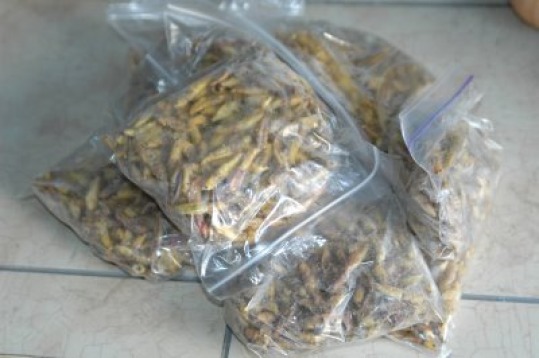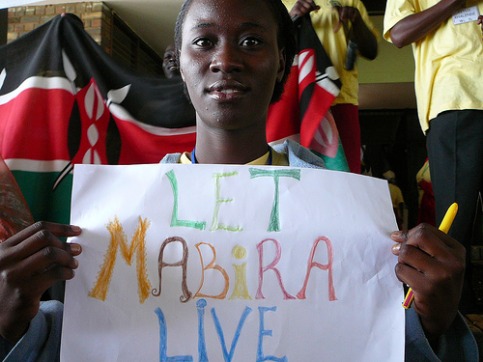Nsenene is the Luganda name for a long-horned grasshopper (more commonly called bush cricket or katydid) that is a central Ugandan delicacy as well as an important source of income. The insect is also eaten in neighbouring areas of Kenya and Tanzania. Traditionally in Uganda, nsenene were collected by children and women. They were given to the women’s husbands in return for a new gomasi (a traditional dress for women). Although the women were made to do the treacherous work of collecting nsenene, they were never allowed to eat them. It was believed that women who consume nsenene would bear children with deformed heads like those of a conocephaline bush cricket. Nowadays, nsenene are consumed by most women in the areas where this insect is traditionally eaten.
Mondia whitei (Hook. F.) Skeels (Apocynaceae) also called Whites's ginger, & popularly known in central Uganda as Mulondo is a medicinal plant found in the tropics from West Africa to eastern and southern Africa. It’s a vigorous climber (3-6 m high) with attractive heart-shape leaves and a vanilla aroma. The fleshy bark of the narrow roots is eaten raw or occasionally in the dried state for its good taste, as an appetizer, to freshen the mouth or for pleasure leaving a persistent spicy taste in the mouth; a source of vitamin A, D, K and E, the minerals, magnesium, zinc, iron, calcium and protein. There is also enough scientific evidence supporting its use as an aphrodisiac and in the management of impotence problems. The evidence indicate that it is able to increase libido by stimulating testosterone production, increase potency by being able to relax the corpus cavernosum muscle thus aiding erection and by improving sperm total motility and progressive motility.
However, there is available information that this plant has become rare and endangered in the wild throughout its distribution range and is now of conservation value. A taxon is endangered when evidence indicates that it has a very high risk of extinction in the wild. The main threat to the species is overexploitation by local communities for subsistence and commercial purposes. You and I can therefore help. Together we can promote its cultivation in order to satisfy the subsistence & commercial demand. Forests are local, national & global wealth. It must be managed dedicatedly, attentively, and carefully. With your support, we can conserve, protect and restore forests around the world for the benefit of all including youself & nature. Be warned!! It is not only about Mabira reserve but also about those forest(s) near your home place. Mabira Forest reserve is not just a forest. It is home to 312 species of tree and 199 species of butterfly. Recent Exploratory Inventories carried out in Mabira (for both the production and buffer zones) show that there are close to 2.5 million trees in every hectare. Mabira has wild Robusta coffee, dioscoria tubers (yams) and other plants whose value is still largely unknown. And being the only large forest in the bio-geographical zone of the Lake Victoria Crescent, it provides the only watershed for this already water stressed area.
Mabira Forest Reserve is listed by BirdLife International as an Important Bird Area (IBA). The forest contains over 300 species of bird, including the Endangered Nahan's Francolin Francolinus nahani. The forest also supports nine species of primate, a recently identified new mangabey subspecies in Uganda, Lophocebus albigena johnstoni and a new species of Short-tailed Fruit Bat. Studies have shown that the potential revenue from tourism alone at Mabira was in excess of the costs of managing the Reserve. |





 RSS Feed
RSS Feed